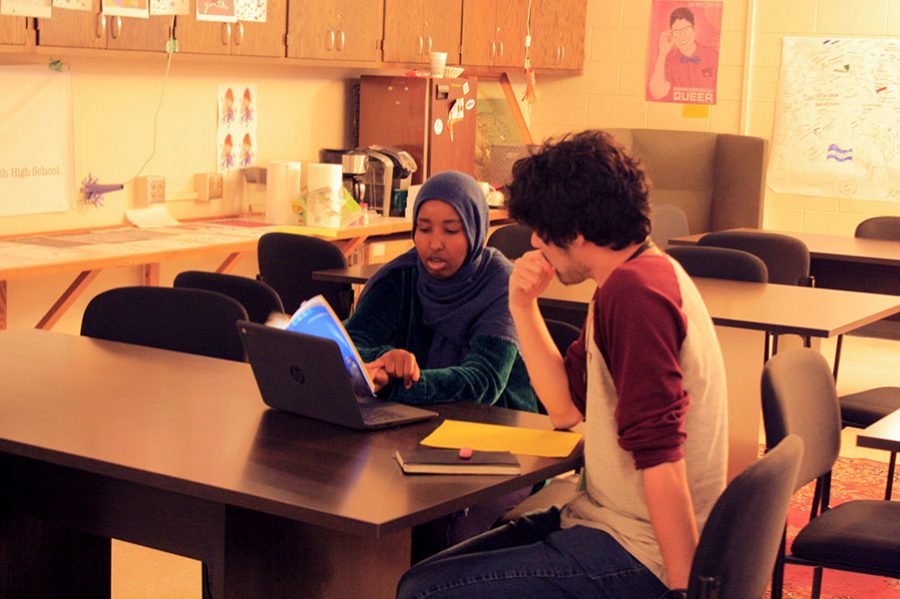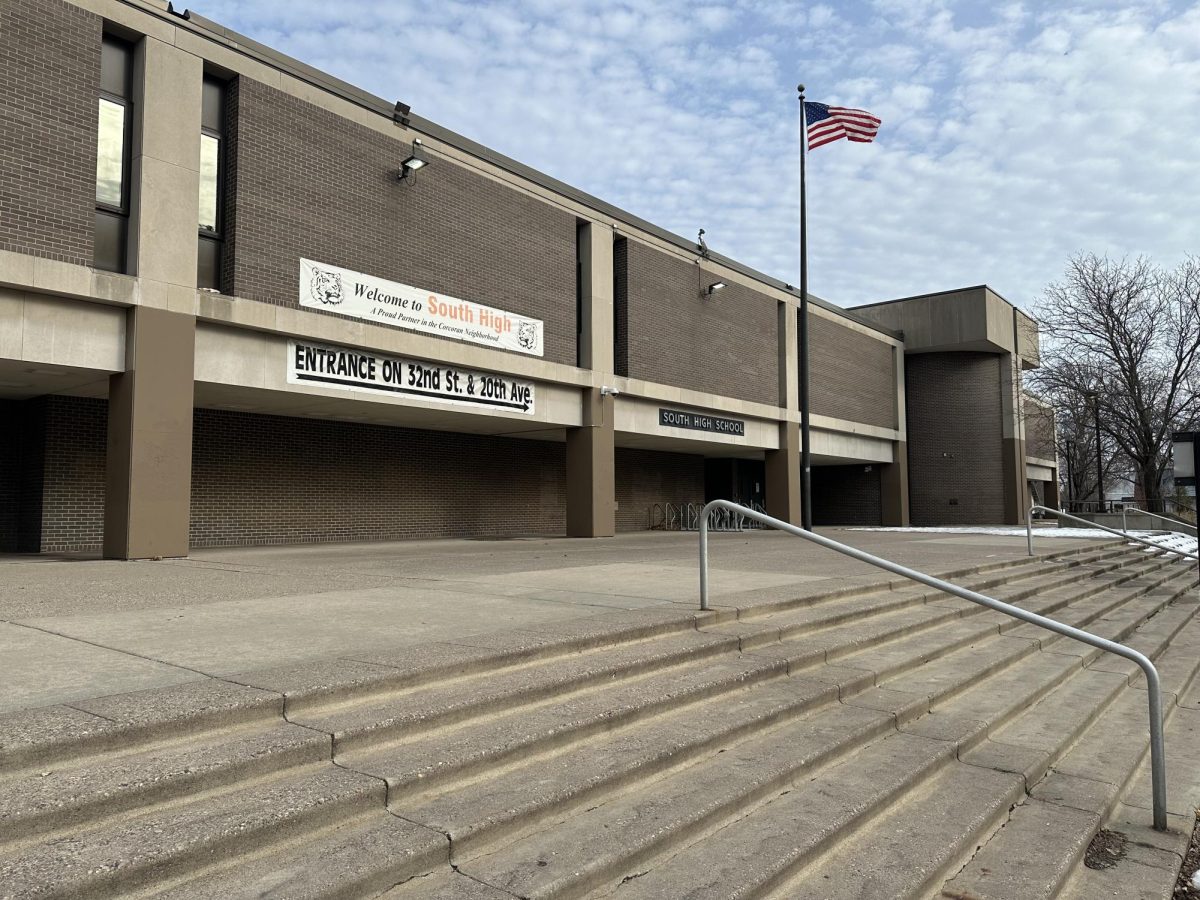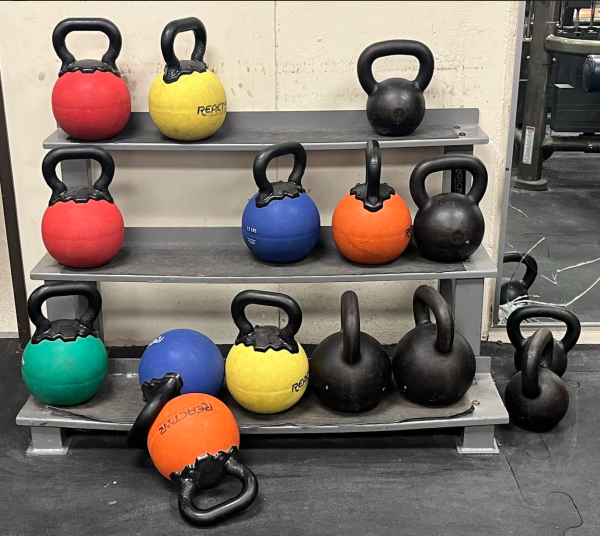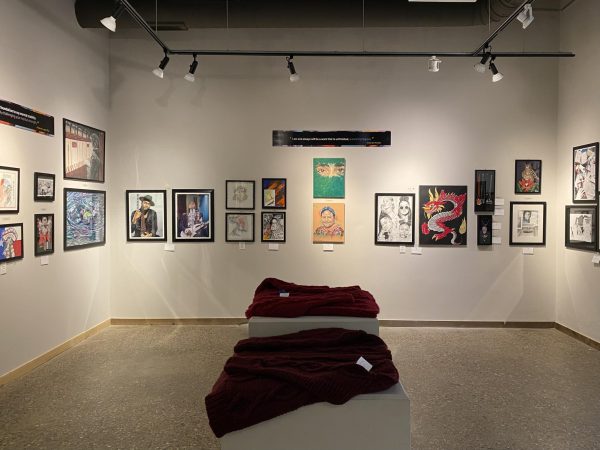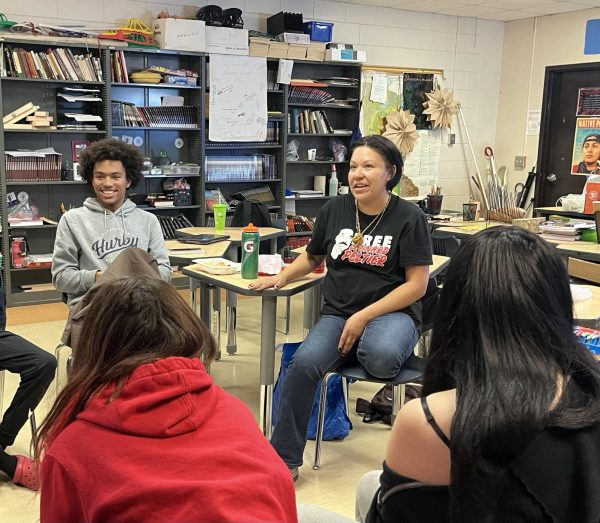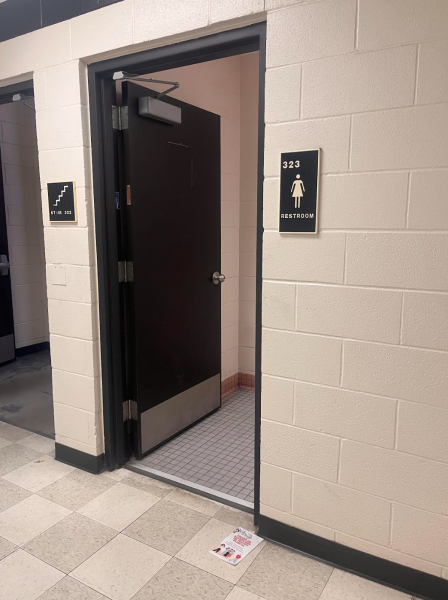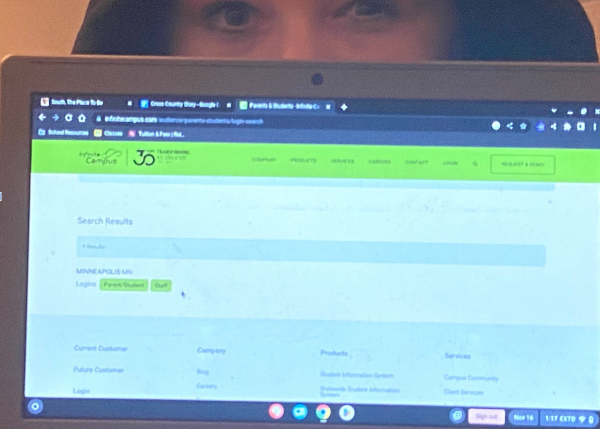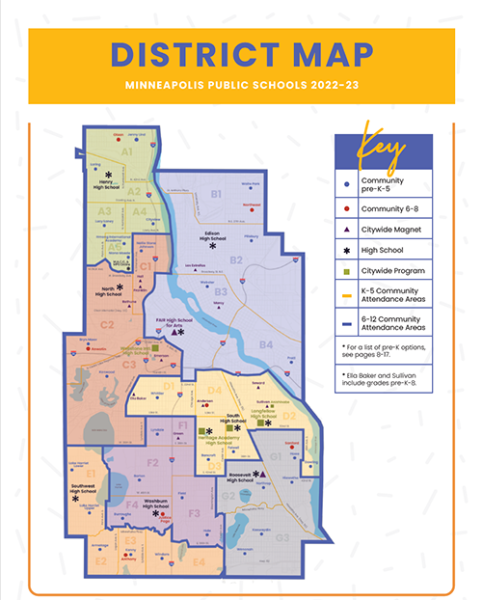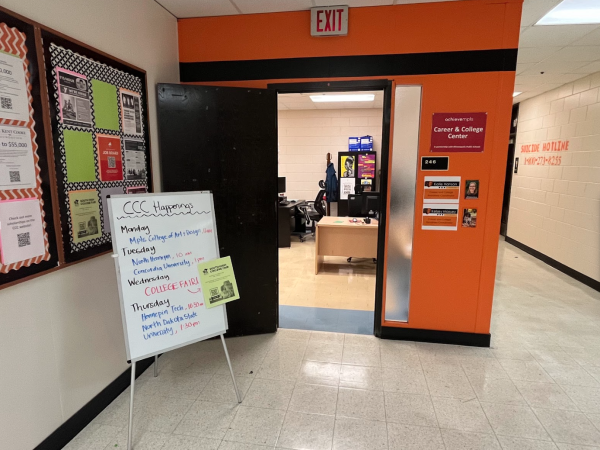The Writers’ Room helps all students get their writing right
A volunteer, David Ashley, from the Writers’ Room partner organization 826 MSP, helps senior Nimo Aden with a writing assignment. Students can get help with school writing, and feedback from peers.
October 22, 2019
The soft incandescent lights of the Writers’ Room cast a warm glow in the welcoming space. The Writers’ Room is a place where students can get help with their writing assignments, be creative, and just write. After its grand opening during the 2018-19 school year, the Writers’ Room is back, with its ocean decor theme, for a second year. This year will come with a new full-time staff member, and many changes. The Writers’ Room is a place that seeks to be a resource that all students can easily access and use regardless of race, class, or any barriers.
Jeannine Erickson, a recent graduate from St. Catherine’s University, is working full-time as the new Writers’ Room Coordinator. She said, “I want a culture of inclusivity, a place to congregate and also a way to find a way to heal the disparities I see in the hallways here in South because I can see the very evident segregation of classes and races … I think writing is a beautiful way to connect people across cultures and diasporas.”
Erickson became involved with the Writers’ Room because of its partnership with AmeriCorps, a voluntary service program. The Writers’ Room is partnered with 826 MSP, a part of a national youth writing network. 826 MSP is the organization that hired Erickson. Erickson said her role is to not just provide tutoring but to “empower youth writers and youth voices.” She tries to be the person “to help this space be the fun productive space that it needs to be.”
Erickson explained that writing doesn’t have to be big, it can be small, and that its not going to be perfect the first time, which is why the Writers’ Room is there to help.
There are many assumptions about how difficult writing is and that only certain people can write well. Peer writing coaches dispel this myth and are important to the Writers’ Room because they help students with their work. Writing coaches review and help students improve their writing, which not only helps both people become better writers, it also builds stron
g bonds. Writing coach Melissa Lantaffi-Wright, a junior, enjoys volunteering and assisting other students. Lantiffi-Wright is happy to be “getting to read other people’s writing and then notice things in their writing then in the future I can notice in my own.”
Like the writing coaches, Erickson believes “that writing is not solitary but interactive. We’re not here to harshly critique your writing, but to empower your writing and to have conversations about writing. And everybody writes.”
South students are discovering the Writer’s Room. Mia Hayes, a 9th grader in the Open Program, went with her English class to learn about the Writers’ Room. They saw a presentation about how to best utilize its resources. “I knew it existed, I knew nothing about it but besides you wrote in there,” said Hayes.
Hayes thought that the comfortable chairs and tables created a productive environment for writing. The octopus tentacles and memorable posters on the walls also help create a tranquil and relaxing atmosphere. “I bet you could fall asleep in there,” Hayes said.
Students in the English classes not only met the staff, but also contributed to the Writer’s Room. Students had the opportunity to make it their own by participating in small activities including choosing posters to put on the walls and writing black out poetry. Hayes said, “I appreciate the help offered.” She also added that if she ever needed help with a writing assignment she wouldn’t hesitate to go to the Writers’ Room.
Members of the Writers’ Room hope that people will also use the room as a place to connect and that clubs, workshops, and classes will use it as a meeting space. Erickson said, “I think what’s great about this space is that there is a lot of different ways people get connected and introduced to the space, but I think the negative part of the space is people start to think that that’s the only way they can come to the space.”

